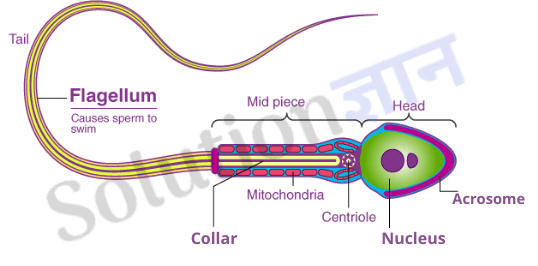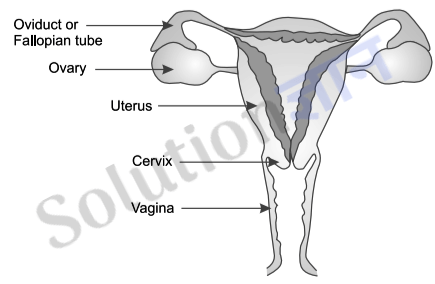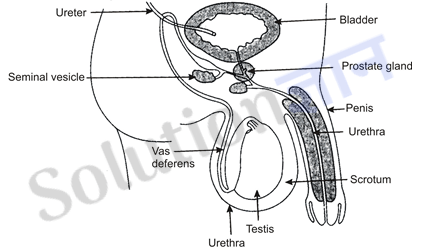DAV Class 8 Science Chapter 14 question answer Reproduction in Animals of The Living World Science Book guides you with the answers to the questions given in the textbook. Class 8 is an important phase of the student’s life as they are introduced to many new concepts that are essential to set strong basics foundation for the topics to be taught in Class 9. To score very good marks in the DAV Class 8 examination students should solve the questions provided at the end of each chapter in Class 8 DAV books.
These DAV Solutions present you with answers to the question on the Reproduction in Animals. While solving the DAV textbook questions, students often face several doubts and eventually get confused. To help the students clear all their doubts instantly, the DAV Class 8 Science Chapter 14 question answer Reproduction in Animals come as a great resource. Here, the detailed Solutions for Class 8 Science Chapter 14 of DAV Class 8 Science book are given below.
DAV Class 8 Science Chapter 14 Reproduction in Animals Solutions
DAV Class 8 Science chapter 14 question answer Reproduction in Animals is given below. Here DAV Class 8 Science Chapter 14 solutions is provided with great explanation.
Highlights
- Fill in the blanks.
- Match the following.
- Tick the correct option.
- Answer the following questions in brief.
- Answer the following questions.
These DAV Class 8 Science Chapter 14 question answer Reproduction in Animals will help you in scoring good marks as they cover important concepts in different patterns like fill in the blanks, tick the correct option, Match the following, short answer questions, long questions answer and more.
A. Fill in the blanks.
1. Genetically identical individuals are produced by ___________ reproduction.
2. ___________ are the specialised cells that take part in sexual reproduction.
3. An animal, that produces both male and female gametes, is known as a ___________ animal.
4. A fertilised egg is also known as the ___________.
5. The incubation period for a hen’s egg is ___________.
Answer: (1) Asexual (2) Gametes (3) Hermaphrodite (4) Zygote (5) 21 days
B. Match the following.
1. Hydra (a) hermaphrodite
2. Reptiles (b) calcite
3. Earthworm (c) budding
4. Gills (d) oviparous
5. Egg shell (e) tadpole
Answer: (1) C, (2) D, (3) A, (4) E, (5) B
C. Tick the correct option.
1. The site of fertilisation, in humans, is the-
Answer: oviduct
2. The reason, why parrot does not belong to the same group as that of monkey, man, cat, is that-
Answer: it is oviparous.
3. An organism, which reproduces by Budding, is-
Answer: Yeast
4. A caterpillar develops into a silk moth through the process of-
Answer: metamorphosis
5. A foetus can be best defined as-
Answer: a well-developed embryo.
D. Answer the following questions in brief.
1. Distinguish between asexual and sexual reproduction.
Answer: The production of young ones by a single parent, without the formation and fusion of gametes, is called asexual reproduction. On the other hand, production of young ones by the formation and fusion of special cells (called gametes), contributed generally by two parents, (male and female) is termed as sexual reproduction.
2. How is reproduction carried out in Hydra?
Answer: Reproduction carried out in Hydra by the process of budding. The offspring remains attached to the parent during its growth. It separates at an appropriate time to live as an independent organism.
3. How is fertilisation in a hen different from fertilisation in a frog?
Answer: Internal fertilisation takes place in a hen while external fertilisation takes place in a frog.
4. State the difference between oviparous and viviparous animals.
Answer: Oviparous animals lay eggs while viviparous animals give birth to young ones.
5. Why is the number of eggs, laid by frogs at a time, much higher than those laid by a hen?
Answer: In frog, external fertilisation takes place and frog lays eggs in water, where eggs are exposed to predators and water current. Most of the eggs of a frog are destroyed by the time and tadpoles come out of some of them. Thus, to increase the chances of fusion of gametes, the frog releases a lot of eggs. But a hen lays eggs on land and takes care of them during incubation. Hence, a frog needs to lay thousands of eggs. This is not the case with a hen.
6. How will you differentiate between a zygote and an embryo?
Answer: A zygote is unicellular while an embryo is multicellular.
7. It is the mother who gives birth to a child. How do children, then, get features. of both the parents?
Answer: A child gets genes from its father and mother. Hence, a child gets features of both the parents.
E. Answer the following questions.
1. Define the term ‘Metamorphosis’. List the changes that a tadpole undergoes to develop into a frog.
Answer: A marked, and more or less abrupt development change in the structure and habits of an animal occurring during its life cycle, is termed as metamorphosis.
Metamorphosis in tadpole begins with the development of hind legs followed by front legs. Then the lungs develop. The tadpole then begins to swim to the surface of water to breathe. The intestine gets shortened to adapt to a carnivorous diet. The tail gets absorbed by the body during the last stages of metamorphosis.
2. Trace the sequence of events that lead to development of a chick from the fertilised egg of a hen.
Answer: After fertilisation, the zygote starts dividing and moves down the oviduct. As it moves down, a number of protective layers get formed around it. The egg shell is one of these protective layers. It is deposited around the egg in the lower part of the oviduct of the hen, just before the egg is laid. The embryo develops inside the egg for around 21 days, after which the chick gets fully developed. During the incubation period, the eggs require a specific temperature; this is provided by the hen by sitting on the eggs. Finally, the egg shell breaks down and the chick comes out.
3. Where does fertilisation occur in human beings? How does the zygote formed eventually develop into an infant?
Answer: The zygote immediately divides into two cells; these cells then divide again and again, over the next couple of days, and the resulting cluster of cells makes its way to the uterus (womb). This cluster of cells is called the embryo. The embryo plants itself in the lining of the uterus and continues dividing its cells to make billions of new cells. It gradually develops the different body parts, such as the head, eyes, hands, legs, etc. When the embryo reaches the stage where all its body parts can be identified, it is called the foetus. The foetus, when born, is called an infant.
4. Draw a neat well labelled diagram of the human sperm. Also, write how its shape and size help it in its functioning?
Answer: A sperm is smaller in size than the ovum and can only be seen through a microscope. Each sperm cell has three parts: a head, a middle piece and a tail. A structure, at the tip of the head, produces enzymes that help the sperm to penetrate the female ovum.

5. Draw a neat and well labelled diagram of (i) the reproductive system of the human female (ii) the male reproductive system.
Answer:
(1) diagram of the reproductive system of the human female

(2) diagram of the male reproductive system.

6. Write the function(s) of each of the following parts of the human female reproductive system:
(a) Ovaries
Answer: Ovaries produces egg.
(b) Oviduct
Answer: Oviduct is the site of fertilisation.
(c) Uterus
Answer: Uterus is the site of implantation and further development of embryo.

Nice
Thannks
Thnx
I’ve just read it before my exam and I can say that I will top…
Thanks
I top in class when I read this ????????????
thanks
Thanks ????
Thanks